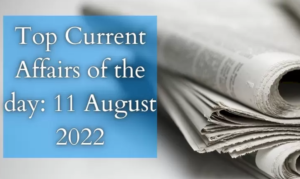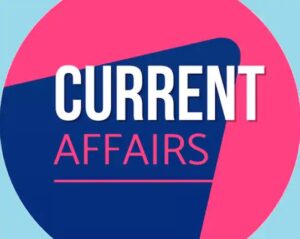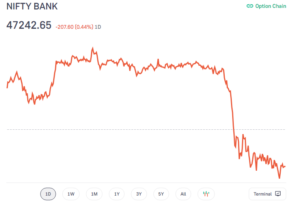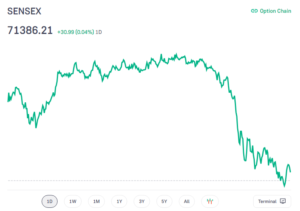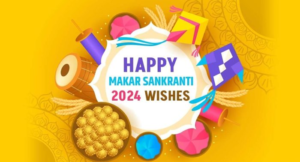
IPL 2022 Final: Gujarat Titans won the title
IPL 2022 Final
The Indian Premier League (IPL) 2022 ended with Gujarat Titans (GT) lifting the trophy by defeating inaugural champions Rajasthan Royals (RR) at the Narendra Modi Stadium, Ahmedabad on May 29. The Indian Premier League (IPL) 2022, was the 15th edition of the professional Twenty20 cricket league established by the Board of Control for Cricket in India (BCCI).
Brief scores of Rajasthan Royals Vs Gujarat Titans Final Match:
- Rajasthan Royals: 130/9 in 20 overs (Jos Buttler 39; Rashid Khan 1/18, Hardik Pandya 3/17).
- Gujarat Titans: 133/3 in 18.1 overs (Hardik Pandya 34, Shubman Gill 45 not out).
Key points of IPL 2022 Final:
- IPL 2022 Closing Ceremony: It was a full house at the Narendra Modi Stadium as the attendance marked 1,04,859.
- BCCI president Sourav Ganguly and General Secretary Jay Shah then receive a certificate as IPL created a Guinness world record for the world’s largest cricket jersey.
- AR Rahman, the Academy Award winner, was the star of the show at the IPL 2022 Closing Ceremony.
- Ranveer Singh’s dance performance, which included the ‘Vaathi Coming’ from Master and ‘Naatu Naatu’ from RRR, was the perfect start of the electric evening of the IPL 2022 Closing Ceremony.
IPL 2022 Final: List Of All Prize Winners
- Aramco Purple Cap Winner Of The Season: Yuzvendra Chahal (27 Wickets)
- Aramco Orange Cap Winner Of The Season: Jos Buttler (863 Runs)
- Player Of The Match (Final): Hardik Pandya
- Upstox Most Valuable Player Of The Season: Jos Buttler
- Punch Super Striker Of The Match (Final): David Miller
- Dream11 Game Changer Of The Match (Final): Hardik Pandya
- Unacademy Let’s Crack It Sixes Award (Final): Yashasvi Jaiswal
- CRED Powerplayer Of The Match (Final): Trent Boult
- Upstox Most Valuable Asset Of The Match (Final): Hardik Pandya
- SwiggyInstamart Fastest Delivery Of The Match (Final): Lockie Ferguson
- Rupay On The Go 4s Of The Match (Final): Jos Buttler
- IPL 2022 Emerging Player Of The Season: Umran Malik
- Unacademy Let’s Crack It Sixes Award Of The Season: Jos Buttler
- Punch Super Striker Of The Season: Dinesh Karthik (SR – 183.33)
- Dream 11 Game Changer Of The Season: Jos Buttler
- PayTM Fairplay Award: Gujarat Titans & Rajasthan Royals
- CRED Powerplayer Of The Season: Jos Buttler
- SwiggyInstamart Fastest Delivery Of The Season: Lockie Ferguson (157.3 KMPH)
- Rupay On The Go 4s Of The Season: Jos Buttler
- Tata IPL Catch Of The Season: Evin Lewis
FAQs related to IPL 2022 finals
1. Who is the winner of the IPL finals 2022?
Ans. Gujarat Titans won IPL 2022 finals against Rajasthan Royals by 7 wickets.
2. Who won the IPL finals yesterday?
Ans. Gujarat Titans won IPL 2022 Finals against Rajasthan Royals by 7 wickets.
3. Who won the IPL finals?
Ans. Gujarat Titans won the IPL finals 2022.
4. Who are Gujarat Titans’ retained players?
Ans. Gujarat Titans’ chosen players for 2022 were Hardik Pandya, Rashid Khan, and Shubham Gill. They were not retained but they were the Chosen players.
International Day of UN Peacekeepers observed on 29th May
International Day of UN Peacekeepers is observed globally on 29th May. The International Day of United Nations Peacekeepers also offers a chance to honour around 4,200 peacekeepers who lost their lives serving under the UN flag since, including 135 who lost the battle last year. UN Secretary-General António Guterres said that this year, the focus is on the Power of Partnerships.
The theme of the International Day of UN Peacekeepers 2022:
The theme for this year’s Day is “People. Peace. Progress. The Power of Partnerships.” Peacekeeping is one of the many tools used by the United Nations to secure global peace and security. UN Peacekeepers are also known as the Blue Helmets, is a collective enterprise, which aims to change lives for the better.
History of the day:
The first UN peacekeeping mission was established on 1948, May 29 when the Security Council deployed a small number of UN military observers to the Middle East to form the United Nations Truce Supervision Organization (UNTSO) with the objective to monitor the Armistice Agreement between Israel and its Arab neighbours. Since 1948, more than 1 million people have served in the UN peacekeeping operations, which were 72 in number.
Cannes Film Festival 2022: Complete List Of Winners
Cannes Film Festival 2022
The 75th edition of the Cannes Film Festival came to a glittering close with the nine-member jury giving out the big awards at the prestigious festival. The awards were selected by a nine-member jury headed by French actor Vincent Lindon and presented in a closing ceremony inside Cannes’ Grand Lumière Theater. The jury included an Indian face in actor Deepika Padukone. A separate section of two awards for documentary films was adjudged earlier on Saturday. Those awards were adjudged by a separate jury.
FULL LIST OF WINNERS AT 2022 CANNES FILM FESTIVAL
- Palme d’Or: Triangle of Sadness, directed by Ruben Östlund
- Grand Prix: Stars at Noon, directed by Claire Denis and Close directed by Lukas Dhont
- Jury Prize: Eo, directed by Jerzy Skolimowski and Le Otto Montagne, directed by Charlotte Vandermeersch and Felix van Groeningen
- Best Director: Park Chan-wook for Decision to Leave
- Best Actor: Song Kang-ho for Broker
- Best Actress: Zar Amir Ebrahimi for Holy Spider
- Best Screenplay: Tarik Saleh (Boy from Heaven)
- Camera d’Or: Gina Gammell and Riley Keough for War Pony
- Jury Special Award: Tori and Lokita
- L’Oeil d’Or: All That Breathes
- Jury Special Award (documentary): Mariupolis 2
Fortune 500 list: Elon Musk, world’s richest man, was 2021’s highest paid CEO
Elon Musk, the multi-billionaire CEO of Tesla and SpaceX highest-paid executive in the world. Musk has topped the Fortune’s new list of the most highly compensated CEOs on the Fortune 500. In 2021, Musk “realized” compensation worth almost USD 23.5 billion, from exercising some Tesla stock options awarded in a 2018 multiyear “moonshot” grant. After Musk, the 10 most highly compensated Fortune 500 CEOs of 2021 are all tech and biotech CEOs, including the heads of Apple, Netflix, and Microsoft.
List of top 10 most highly compensated CEOs:
- Elon Musk, Tesla: USD 23.5 Billion
- Tim Cook, Apple: USD 770.5 Million
- Jensen Huang, NVIDIA: USD 561 Million
- Reed Hastings, Netflix: USD 453.5 Million
- Leonard Schleifer, Regeneron Pharmaceuticals: USD 452.9 Million
- Marc Benioff, Salesforce: USD 439.4 Million
- Satya Nadella, Microsoft: USD 309.4 Million
- Robert A. Kotick, Activision Blizzard: USD 296.7 Million
- Hock E. Tan, Broadcom: USD 288 Million
- Safra A. Catz, Oracle: USD 239.5 Million
BOB Financial and HPCL started up a co-branded contactless RuPay Credit Card
HPCL and BOB co-branded contactless RuPay Credit Card has been launched by BOB Financial and Hindustan Petroleum (HPCL) in collaboration with National Payments Corporation of India (NPCI). The card has a number of advantages, including incentives for utility, supermarket, and department shop purchases. The JCB network allows you to use this card at shops and ATMs all around the world. BOB Financial is the Bank of Baroda’s wholly-owned subsidiary (BoB).
Key Points:
- At HPCL petrol stations and on the HP Pay app, cardholders of the HPCL and BOB RuPay Contactless Credit Card can earn up to 24 reward points (every Rs 150 spent).
- Additionally, cardholders will receive a 1% Fuel Surcharge Waiver on fuel purchases made at HPCL pumps or through HP Pay.
- Customers who spend Rs 5,000 or more within 60 days of receiving their card will receive an additional 2,000 reward points.
- The co-branded credit card will give you 10 reward points for every Rs 150 spend on utilities, groceries, and department shops, and 2 reward points for everything else. In addition, the card provides great savings on cinema ticket reservations.
- Cardholders will receive four complimentary trips to domestic airport lounges each year.
Justice Mohanty gets additional charge of Lokpal chairperson
President Ram Nath Kovind has given justice Pradip Kumar Mohanty the additional charge of Lokpal chairperson after justice Pinaki Chandra Ghose completed his term as the Lokpal chief. At present, there are six members in the Lokpal. President Ram Nath Kovind had on March 23, 2019, administered the oath of office to justice Ghose as the Lokpal chairperson.
Key Points:
- Two posts of judicial members have been lying vacant for over two years.
- The Lokpal and Lokayuktas Act, which envisages the appointment of a Lokpal at the Centre and Lokayuktas in states to look into cases of corruption against certain categories of public servants, was passed in 2013.
- A Lokpal chief and members are appointed for a term of five years or until attaining the age of 70 years.
- A Lokpal chief and its members are appointed by the President after obtaining the recommendations of a selection committee headed by the Prime Minister and comprising the speaker of the Lok Sabha, the Leader of Opposition in the lower house, the Chief Justice of India or a judge of the Supreme Court nominated by him, and an eminent jurist as recommended by the chairperson and members of the selection panel.
RBI’s Banknote Survey: Rs 100 is the most preferred banknote
The Reserve Bank of India’s Banknote Survey of Consumers’ findings revealed that, among banknotes, Rs100 was the most preferred while Rs 2,000 was the least preferred denomination. The survey, that was published in the Reserve Bank of India Annual Report this year said that Rs 100 notes were most preferred among Indians, while Rs 2000 notes were the least preferred. The RBI survey also found out that the total number of Rs 2000 notes comprised only 214 crores or 1.6 per cent of the total currency notes in circulation.
RBI Survey of Consumers on Bank Notes:
A diverse sample of 11,000 respondents from rural, semi-urban, urban and metropolitan areas, spanning 28 states and three union territories participated in the survey. The survey also included 351 visually impaired respondents (VIR). The survey covered respondents from the age of 18 to 79 years with a gender representation of 60:40 for males and females.
Here is what the survey findings revealed:
- The survey findings revealed that, among banknotes, Rs 100 was the most preferred while `Rs 2000 was the least preferred denomination.
- Among coins, the denomination of Rs 5 was the most preferred whereas Re 1 was the least preferred.
- The watermark of Mahatma Gandhi’s image followed by the windowed security thread were the most recognised security feature.
- Around 3 per cent of the respondents were not aware of any banknote security feature.
- Overall, approximately seven out of 10 respondents were found to be satisfied with the new series of banknotes.
- Among the visually impaired, the majority were found to be aware of the quality of paper and the size of the banknotes.
Sarva Shiksha Abhiyan: Sub-Programmes and Background
Sarva Shiksha Abhiyan
The Sarva Shiksha Abhiyan, or SSA, is an Indian government programme aimed at universalizing elementary education in a time bound manner, with the 86th Amendment to the Indian Constitution making free and compulsory education for children aged 6 to 14, which was estimated to be 206 million children in 2001, a fundamental right under Article- 21A. Former Indian Prime Minister Atal Bihari Vajpayee pioneered the initiative. By 2010, the goal was to educate all children aged 6 to 14. However, the deadline has been extended indefinitely.
Key Points of Sarva Shiksha Abhiyan:
- Its initial budget was 7,000 crores, but the Indian government increased its funding to 21,000 crores (US$2.8 billion) in 2011-12, a 40 percent increase over the previous year.
- Many individuals and trusts have also given, and as the show expanded in popularity, the fund grew as well.
- The Sarva Shiksha Abhiyan (SSA) is a Universal Elementary Education programme.
- This initiative also aims to provide an opportunity for all students to improve their human potential by providing community-owned quality education in a mission mode.
- It is a response to the widespread need for high-quality basic education. Mehboob wrote the poem School Chalen Hum to promote the Sarva Shiksha Abhiyan (SSA) initiative.
- Sarva Shiksha Abhiyan was launched in 2018 alongside Rashtriya Madhyamik Shiksha Abhiyan to form Samagra Shiksha Abhiyan.
Sub-Programmes of Sarva Shiksha Abhiyan:
Sarva Shiksha Abhiyan’s Padhe Bharat Badhe Bharat is a countrywide sub-programme. Early reading failure causes children to fall behind in other courses. The curriculum is meant to help students in Classes I and II develop their early reading, writing, and mathematical skills. States were given a total of Rs.762 crore (US$100 million) under this initiative. The programme will incorporate not only a print-rich atmosphere and timely book distribution, but also innovative teacher mentorship and appraisal systems.
Since 2000-2001, SSA has provided a variety of interventions aimed at increasing universal access and retention, bridging gender and social category gaps in elementary education, and improving learning quality. Opening of new schools and alternate schooling facilities, construction of schools and additional classrooms, toilets and drinking water, teacher provisioning, regular teacher in service training and academic resource support, free textbooks and uniforms, and support for improving learning achievement levels / outcomes are all examples of SSA interventions. Changes have been made to the SSA’s approach, strategies, and norms as a result of the passage of the RTE Act.
The improvements include the following ideas that influence the vision and approach to elementary education: The National Curriculum Framework 2005 interprets a holistic view of education as having implications for a systemic redesign of the entire content and process of education, with considerable consequences for curriculum, teacher education, educational planning, and management. Equity refers to the establishment of conditions in which disadvantaged members of society, such as children of SC, ST, Muslim minorities, landless agricultural labourers, and children with special needs, can benefit from the chance. Access does not just mean making a school accessible to all children within a certain distance; it also means understanding the educational needs and plight of traditionally marginalised groups such as the SC, ST, and other sections of the most disadvantaged groups, the Muslim minority, girls in general, and children with special needs.
Gender concern entails not just making an effort to enable girls to keep up with boys, but also viewing education through the lens of the National Policy on Education of 1986/92, i.e. a decisive intervention to bring about a fundamental shift in women’s status. The importance of teachers in motivating them to innovate and establish a culture in and outside of the classroom that can provide an inclusive environment for children, particularly females from oppressed and marginalised backgrounds. Rather than focusing on punitive processes, the RTE Act imposes moral compulsion on parents, teachers, educational administrators, and other stakeholders. The RTE law cannot be implemented without a convergent and integrated educational management system.
Background of Sarva Shiksha Abhiyan:
It began as an intervention programme in 2002, and SSA has been in existence since 2000-2001. Its origins, however, may be traced back to 1993-1994, when the District Primary Education Programme (DPEP) was established with the goal of establishing universal primary education. Over the course of multiple phases, the DPEP encompassed 272 districts in 18 states. The Central Government has 85 percent and the State Governments split the cost of the programme at 15 percent.
A number of external organisations, notably the World Bank, the Department for International Development (DFID), and UNICEF, contributed to the Central share. More than $1500 million has been pledged to the programme by 2001, with 50 million youngsters covered. The authors concluded that DPEP’s net impact on minority children was impressive, whereas there was minimal evidence of any influence on girls’ enrolment in Phase I of the programme. Nonetheless, they determined that the DPEP investment was worthwhile because it pioneered a novel method to elementary school interventions in India.
FAQs
When was the Sarva Shiksha Abhiyan launched?
The Sarva Shiksha Abhiyan was established in 2001 by the Ministry of Human Resource Development (MHRD) of the Government of India. The programme was started by former Indian Prime Minister Atal Bihari Vajpayee. By 2010, all children aged 6 to 14 will have had an education. The deadline, however, has been extended indefinitely.
What is the main objective of Sarva Shiksha Abhiyan?
With the 86th Amendment to the Indian Constitution making free and compulsory education for children aged 6 to 14 (estimated to be 206 million children in 2001) a fundamental right, the Sarva Shiksha Abhiyan, or SSA, is an Indian government programme aimed at universalizing elementary education in a time-bound manner (Article- 21A). The SSA Program’s main goal is to achieve Universalization of Elementary Education (UEE) in the country. The Sarva Shiksha Abhiyan’s overall purpose is to provide universal access and retention, close gender and social inequities in education, and improve learning levels for children.
What is SSA scheme?
The Sarva Shiksha Abhiyan (SSA) is the Government of India’s flagship programme for achieving Universalization of Elementary Education (UEE) in a time-bound manner, as required by the 86th amendment to the Indian Constitution, which makes free and compulsory education for children aged 6 to 14 years a Fundamental Right.
Why SSA was started?
The Sarva Shiksha Abhiyan (SSA) is the government of India’s main programme to accomplish Universalization of Elementary Education (UEE) in a time-bound manner, as specified by the Indian Constitution. The right to education became a fundamental right in India with the 86th amendment to the Indian Constitution.
Why is SSA important?
It has several significant features, including: providing a practical and elementary education to all children aged 6 to 14. With the active participation of the community in the management of the school, social, regional, and gender barriers will be bridged. To give youngsters the opportunity to learn about and master their natural surroundings.
Punjabi singer Sidhu Moose Wala shot dead
29-year old Punjabi singer, Sidhu Moose Wala was shot dead by unidentified assailants in Jawaharke village of Mansa district, Punjab. The incident happened a day after the Punjab Police ordered the withdrawal of security of his security along with more than 420 people, including former MLAs, Jathedars of two Takhts, heads of Deras, and police officers.
Who was Sidhu Moose Wala?
Born on June 17, 1993, Shubhdeep Singh Sidhu aka Sidhu Moose Wala belonged to the Moose Wala village in Mansa district. Moose Wala had a fan following running into millions and was popular for his rap. Moose Wala held a degree in electrical engineering. He had learned music during his college days and had later moved to Canada. Sidhu Moose Wala had contested this year’s Punjab assembly election on a Congress ticket from Mansa and was defeated by AAP candidate Vijay Singla by a huge margin of 63,000 votes.
Salt Satyagraha: Background, Consequences and Results
What is Salt Satyagraha
Salt Satyagraha is also known as Salt march, Dandi March, or Dandi Satyagraha. It was a nonviolent protest which was led by Mahatma Gandhi in Colonial India. It started on 12th March 1930 and ended on 6th April 1930. It was twenty-four days in March to protest against the British salt monopoly and resistance to taxes for salt. The protest led by Mahatma Gandhi aimed to make salt tax-free in India. As the March started it only had 80 people, but as it grew stronger with 50,000 protestors, it became a historical protest in the Indian History and a huge step in the freedom struggle of India. Salt Satyagraha is one of the major non-violent protests in India.
Salt-Satyagraha: Background
- The Congress, in 1930 declared that the sole aim of the freedom struggle is complete independence or Poorna Swarajya. It meant, that the major goal of India’s freedom struggle will be no interference and dependency on the British government.
- On 26th January, it was declared that it will be celebrated as Poorana Swarajya Day. The means to achieve Poorna Swarajya is Civil disobedience.
- Mahatma Gandhi was approached to plan and organize such acts to resist the government. Gandhi chooses to break the salt law first.
- The British government and the then Viceroy, Lord Irwin were not concerned about the breaking of salt law by Indians and they did nothing to stop the salt march.
- Gandhi decided to break the salt law as he knew it will cause a lot of damage to the Government and will be a huge revolution in the freedom struggle.
- Salt is the basic need of every citizen, whether rich or poor. The salt tax affected everyone in the nation.
- Until the salt act of 1882 was passed, Indians made salt from seawater free of cost. The British got the upper hand over the production of salt and they imposed taxes on salt when they got the authority. Nevertheless, they also made it a criminal offense to violate the salt act.
- 8.2% of the British Raj revenue was accounted for from salt tax. Gandhi’s thoughts on this were, If Indians start protesting against this, it will be a huge loss for the British.
Salt Satyagraha: Consequences of Satyagraha
- On 2nd March 1930, Lord Irwin was informed about the Salt March by Gandhi.
- On 12th March 1930, he lead a group of people from Sabarmati Ashram. He decided to walk through the villages of Gujarat.
- The March started with 80 people but as the March went on more than 50,000 people joined Gandhi in the protest.
- When the group of people reached the coastal Village of Dandi on 6th April 1930, Gandhi made salt from seawater breaking the salt act against the government.
- Throughout the protest the people in March were strictly instructed to not get involved in any kind of violence.
- Gandhi addressed the crowd and gave a speech against the government.
Salt-Satyagraha: Results
The twenty-four days long civil disobedience movement led to the Gandhi-Irwin Pact which favored the Indian freedom struggle. In the pact it was decided that civil disobedience would be ended by Indians, the salt will be allowed for domestic use for everyone, the arrested Indians for breaking the salt law were released and Gandhi was allowed to attend the second round table conference.
FAQs on salt Satyagraha
1. What was the Salt-Satyagraha?
Ans. The Salt Satyagraha was a civil disobedience movement led by Mahatma Gandhi. The Satyagraha was against the salt taxes imposed by the British government.
2. Where is the National Salt Satyagraha Memorial situated?
Ans. National Salt Satyagraha Memorial is situated in Dandi, Gujarat. It was inaugurated on 30 January 2019.
3. What was the first Target of Satyagraha?
Ans. The first Target of Satyagraha was the Salt March. Gandhi decided to protest against the British government with the salt march first as it affected India in a lot of ways.
Ease of living: Common platform called Jan Samarth to be launched soon
Jan Samarth
The government intends to launch Jan Samarth, a unified platform for the delivery of multiple initiatives administered by several ministries and departments, in order to make life easier for the average man. The new portal will initially enrol 15 credit-linked government initiatives, as part of the Narendra Modi government’s objective of minimum government maximal governance.
KEY POINTS:
- They noted that because some of the Centrally Sponsored Schemes include various agencies, the services will be gradually increased based on compatibility.
- Different ministries, for example, run initiatives like the Pradhan Mantri Awas Yojana and the Credit Linked Capital Subsidy Scheme (CLCSS).
- The proposed portal aims to put various schemes together on a single platform so that beneficiaries can access them easily. State Bank of India and other lenders are doing pilot testing and tying up loose ends before the official launch, according to the statement.
- Because of the portal’s open architecture, state governments and other organisations will be able to add their plans to the platform in the future.
- To make it easier for borrowers, the government developed a platform in 2018 that offered a variety of credit products, including MSME, home, auto, and personal loans.
- Various state-owned banks can now approve loans for MSMEs and other borrowers in principle in 59 minutes, compared to the previous turnaround time of 20-25 days.
Jaisalmer: Adani Green commissions India’s first wind-solar hybrid power facility
Adani Green subsidiary Adani Hybrid Energy Jaisalmer One Limited has commissioned a 390 MW wind-solar hybrid power facility in Jaisalmer, contributing significantly to India’s green energy effort. The plant will be India’s first hybrid wind-solar power producing facility. The hybrid power plant, which combines solar and wind generating, unlocks the full potential of renewable energy by eliminating generation intermittency and providing a more stable option to meet rising power demand.
KEY POINTS:
- The new plant has a Power Purchase Agreement (PPA) with the Solar Energy Corporation of India (SECI), with a tariff of Rs. 2.69 per kWh, which is significantly lower than the national Average Power Procurement Cost (APPC), ensuring that everyone has access to affordable, modern, and clean energy.
- Wind-Solar Hybrid energy, according to Vneet S Jaain, MD and CEO of AGEL, is a key part of the company’s business strategy, which aims to address India’s growing demand for green energy.
- The inauguration of this hybrid power plant is a small step toward India’s long-term energy aspirations.
This project is part of Adani Green’s first construction facility, which was funded by foreign banks. It is impressive that the project was completed effectively despite the global pandemic’s uncertainty. - AGEL now has a 5.8 GW operational capacity because to the plant’s successful commissioning. AGEL’s overall renewable portfolio of 20.4 GW puts it on track to fulfil its 2030 goal of 45 GW capacity.
Important Takeaways For All Competitive Exams:
- MD and CEO of AGEL: Vneet S Jaain
Uttarakhand formed panel to implement Uniform Civil Code
Uttarakhand government has announced the formation of a 5-member drafting committee to implement the much-debated Uniform Civil Code (UCC) in the state. The retired Supreme Court judge Ranjana Desai, who currently heads the Delimitation Commission of India is the Head of the committee. Other members of the committee are: Delhi High Court judge Pramod Kohli, ex-state chief secretaries Shatrughan Singh, Manu Gaud and Surekha Dangwal.
The Governor has given his permission to establish an expert committee to check all the relevant laws which control personal matters for people living in Uttarakhand and to prepare a report on amendments in the present laws
What is Uniform Civil Code?
The UCC is referred to a common set of laws governing personal matters such as marriage, divorce, adoption, inheritance and succession for all citizens, irrespective of religion. The UCC will be an important step to solidify the spirit of the Constitution. This will also be an effective step toward Article 44 of the Constitution which talks about securing a UCC for every citizen of the country. The apex court, too, from time to time has emphasised on its implementation.
Important takeaways for all competitive exams:
- Uttarakhand Chief Minister: Pushkar Singh Dhami;
- Uttarakhand Capitals: Dehradun (Winter), Gairsain (Summer);
- Uttarakhand Governor: Lt Gen Gurmit Singh.
PM Modi: India is one of the world’s fastest-growing economies
Prime Minister Narendra Modi announced that India has become one of the world’s fastest growing economies. He was addressing at an occasion where he announced the PM-CARES for Children Scheme’s benefits. In the midst of the pandemic’s negative mood, Prime Minister Narendra Modi stated that India relied on its strength.
KEY POINTS:
- India had faith in its scientists, doctors, and young people. And we emerged as a beam of optimism for the globe, rather than a source of concern. India did not become the problem; instead, we became the provider of solutions.
- The Prime Minister went on to say that no one could have predicted the achievements India has made in the last eight years.
- Today, India’s pride in the globe has grown, as has its power in international forums. And he is pleased that India’s journey is being led by young.
- Moody’s Investors Service cut India’s economic growth forecast for 2022 from 9.1 percent to 8.8 percent, citing excessive inflation.
- High-frequency data implies that the growth momentum from December quarter 2021 carried over into the first four months of this year, according to Moody’s Global Macro Outlook 2022-23.
Women’s T20 Challenge: Supernovas Beat Velocity
Supernovas won the Women’s T20 Challenge 2022 with a four-run victory over Velocity in the title clash. West Indies T20 specialist Deandra Dottin shined with both bat and ball as she powered Supernovas to a record third Women’s T20 Challenge title triumph with a four-run victory over Velocity. The Women’s T20 Challenge is an Indian women’s cricket 20-20 tournament organised by BCCI.
Dottin hit 62 off 44 balls at the top of the order to help Supernovas post a competitive 165-7 after being put in to bat first. She returned to grab two wickets for 28 runs in her four overs and played a major role in restricting Velocity to 161-8.
Supernovas had won the first two editions of the Women’s T20 Challenge in 2018 and 2019 before losing to Trailblazers in the final in 2020. The tournament was not held last year due to the COVID-19 pandemic.
Brief scores:
- Supernovas: 165/7 in 20 overs (Deandra Dottin 62, Harmanpreet Kaur 43; Deepti Sharma 2/20).
- Velocity: 161/8 in 20 overs (Laura Wolvaardt 65 not out; Alana King 3/32, Deandra Dottin 2/28, Sophie Ecclestone 2/28).
North India’s first Industrial Biotech Park inaugurated at Kathua in J&K
Jammu and Kashmir (J&K) Lieutenant Governor, Manoj Sinha and Union minister Jitendra Singh inaugurated the north India’s first Industrial Biotech Park constructed at Ghatti near Kathua. The Industrial Biotech Park at Kathua will transform the economy and enable scientists to tackle the challenges of climate change. The enabling infrastructure will fuel a new wave of innovation and impact various sectors, from health and agriculture to cosmetics and materials.
About the Industrial Biotech Park:
- With new biotech capabilities and innovation, J&K, bestowed with more than 3500 medicinal plant species, will be able to harness market advantages in the most effective way and help the farmers to generate more income, asserted the Lt Governor.
- The new Industrial Development Scheme has enabled J&K to fetch investment of more than Rs 38,800 crore as of date, which also includes proposals of 338 industrial units associated with the biotech sector in some way or the other.
- The Biotech Park would act as the hub for the incubation of new ideas and will act as a robust platform to support the agri-entrepreneurs, startups, progressive farmers, scientists, scholars and students not only from Jammu and Kashmir and Ladakh but also from nearby states of Punjab, Haryana and Himachal Pradesh.
Shaunak Sen’s documentary ‘All That Breathes’ wins L’OEil d’Or award at Cannes Film Festival
Filmmaker Shaunak Sen’s documentary All That Breathes, India’s only entry at Cannes Film Festival 2022, has won the 2022 L’Oeil d’Or, the festival’s top prize for documentaries. “L’Oeil d’Or goes to a film that, in a world of destruction, reminds us that every life matters, and every small action matters. The award includes a cash prize of 5,000 euros ( ₹4.16 lakh approximately).
About the L’Oeil d’Or documentary award:
The L’Oeil d’Or documentary award, also known as The Golden Eye award, was created in 2015 by the French-speaking authors’ society LaScam in collaboration with the Cannes Film Festival.
Other awards won by All That Breathes documentary:
All That Breathes had also won the World Cinema Grand Jury Prize: Documentary at the 2022 Sundance Film Festival. Recently, it was acquired by HBO, a US-based cable network. After its release in the US late this year, the documentary will debut on HBO and streaming service HBO Max in 2023.
IRDAI Established Committees to Recommend Changes to Insurance Industry
The Insurance Regulatory and Development Authority of India (IRDAI) has formed various committees through the General Insurance Council (GIC) to suggest reforms in several areas of general, reinsurance, and life insurance, including regulation, product, and distribution, among others, in order to overhaul the industry.
According to a GIC spokesman, these panels include leaders of private and public sector insurance companies, members of Irdai, and representatives from the GIC. Irdai established GIC to serve as a liaison between the insurance regulator and the non-life insurance business.
About IRDAI
The Insurance Regulatory and Development Authority of India (IRDAI) is a regulatory agency that is responsible for regulating and licencing the insurance and reinsurance businesses in India. It is under the Ministry of Finance’s jurisdiction. It was established by the Insurance Regulatory and Development Authority Act, 1999, which was passed by the Indian Parliament. The agency’s headquarters have been in Hyderabad, Telangana, since 2001, when it relocated from Delhi.
About GIC
GIC Re, or General Insurance Corporation of India Limited, is a state-owned reinsurance firm in India. It is owned by the Government of India’s Ministry of Finance. It was founded on November 22, 1972, under the Companies Act of 1956. GIC Re’s headquarters and registered office are both in Mumbai. Until late 2016, when the Indian insurance market was opened to foreign reinsurance players, including businesses from Germany, Switzerland, and France, it was the only nationalised reinsurance company in the country. GIC Re’s shares are traded on the Bombay Stock Exchange and the National Stock Exchange of India.
Indus Valley Civilization: History, Facts, and Characteristics
Indus Valley Civilization
The Indus valley civilization or the Harappan civilization was among the four major periods of the History of India. It was the Bronze Age civilization in the northern regions of South Asia. It was a major period in the Ancient history of India. This civilization lasted from 3300 BCE to 1300 BCE and the growth of this civilization was seen between 2600 BCE to 1900 BCE. With three early civilizations, ancient Egypt, Mesopotamian, and Indus valley civilization, the Indus valley civilization was one of three early civilizations of Near East and South Asia. The most widespread civilization of that period was the Indus valley civilization, which cover the areas of Pakistan, Afghanistan, and western and northwestern India.
Characteristics of Indus Valley Civilization
The Indus valley civilization is named after the Indus river system. Alluvial plains are found in the Indus river system, where the Indus valley civilization was identified and excavated. Animals like sheep, dogs, goats, humped cattle buffalo, and elephants were domesticated by the people of the Indus valley civilization. The capital cities were Mohenjo-Daro and Harappa. The Harappa is the first site to be excavated in the 1920s and after that its types. The civilization was found to be very planned. Some of the findings were-
- Baked brick houses
- Elaborated drainage system
- Water supply system
- Cluster of large non-residential buildings
- New techniques of handicrafts and metallurgy.
Interesting facts about Indus Valley Civilization
Indus valley civilization has the cities which were the world’s first planned cities. The cities were designed in a gird and rectangular pattern with streets crossing in right-angles. The architectural planning of cities in the Indus valley civilization is believed to be older than the period of Hippodamus of Miletus. The cities have well-planned houses as well as well-planned drainage systems. All the places excavated till now are found to be in this pattern. The bricks that were used to make the houses were baked and of similar dimensions. The roads found in the cities are 10.5m wide which depicts the presence of market places in the ancient period of Indus valley civilization. The cities were planned and had channels running through them for the flow of drainage water. The two most prominent cities of the Indus valley civilization are Mohenjodaro and Harappa. Both of these cities are believed to have a population of 40,000-50,000 people. Most ancient cities had a population of 10,000 but this proves that the Indus Valley civilization was huge.
Facts about the Indus valley civilization
- The population was over 5 million in the Indus valley civilization.
- The major population was either traders or artisans. They were mostly involved in Artistic activities.
- In 1999, a board with stone symbols was found which is believed to be the first signboard in the world.
- People of the Indus valley civilization were hygienic. There were well-planned drainage systems, dustbins made of bricks, and a great bath.
- Archaeologists have found that there are no temples in Indus valley but the people used to worship ox, and trees like peepal.
The economy of the Indus Valley Civilization
Indus valley civilization was based on agricultural practices. Trading and commerce flourished in this period. In the Mesopotamian scribes (Sumerian), it frequently refers to a place called Meluhha. They were the prominent trading partners of Sumerians. Meluhha imported ebony, sesame oil, timber, and luxury items like Lapis Lazuli in huge quantities, it is believed that there is a huge probability that Meluhha is the Indus valley civilization. The people of the Indus valley civilization were the first cultivators of cotton. The world’s first cotton traces are found here and it is also believed that people here were the first who spun and weaved cotton. The activities like hunting, fishing, clay modeling, and bullfighting existed during the Indus valley civilization. People are food like rice, wheat, barley, milk, fish, meat, and fruits.
FAQs related to the Indus valley civilization
1. Which were the seven cities in the Indus valley civilization?
Ans. Seven cities of the Indus valley civilization were Mohenjodaro, Kalibangan, Chanhudaro, Lothal, Surkotada, Banawali, and Dholavira.
2. Where did the Indus valley civilization flourish?
Ans. The Indus valley civilization flourished over the Indus River banks.
3. What was the economy of the Indus valley civilization?
Ans. The economy of the Indus valley civilization depended on trading. Their major business was import and export.
India’s foremost documentary film festival MIFF 2022 begins
The 17th edition of the Mumbai International Film Festival for Documentary, Short Fiction, and Animation films (MIFF-2022) began with a colourful opening ceremony at the Nehru Centre, Worli in Mumbai, Maharashtra. MIFF 2022 has got an overwhelming response from filmmakers across the world, receiving a whopping eight hundred 8 film entries from 30 countries.
Key points of MIFF-2022:
- Out of these, one hundred 2 films will be screened under the Competition Category – 35 in international competition and 67 in the national competition. 18 Films will be screened under the ‘MIFF Prism Category’.
- In commemoration of Bangladesh’s 50 years of Independence, the country has been chosen as the ‘Country of Focus this year. A special package of 11 films from Bangladesh including the critically acclaimed film ‘Hasina- A Daughter’s Tale’ will be presented at MIFF 2022.
About the Best Film of the Festival:
- The Best Film of the Festival will receive the Golden Conch award, along with a cash prize of Rs 10 lakhs. Other awards carry cash prizes varying from five to one lakh along with Silver Conch, trophy and certificate.
- 11 movies from Bangladesh will be telecast at the festival. 17th MIFF festival can be watched online also and it is entirely free of cost.
- This award is instituted in memory of legendary filmmaker V Shantaram, who has closely associated with the Films Division as Honorary Chief Producer during the 1950s.
INS Gomati decommissioned at Naval Dockyard in Mumbai
INS Gomati was decommissioned at the Naval Dockyard under the command of Captain Sudip Malik. INS Gomati derives her name from the vibrant river Gomti and was commissioned on 16 April 1988 by then Defence Minister, KC Pant, at Mazgaon Dock Ltd, Bombay. The third ship of the Godavari class guided-missile frigates, INS Gomati was also the oldest warrior of the western fleet when decommissioned.
During her service:
INS Gomati participated in numerous operations including Cactus, Parakram and Rainbow, and several bilateral and multinational naval exercises. IMS Gomati was twice awarded the coveted Unit Citation, in 2007-08 and again in 2019-20, for remarkable spirit and stellar contribution to national maritime security.
After INS Gomati’s decommissioning:
The ship’s legacy will be kept alive in an open-air museum being set up on the picturesque banks of the eponymous river Gomti in Lucknow where several of her combat systems will be displayed as military and war relics.
Geological Survey of India: Bihar has India’s largest gold reserves
Geological Survey of India
A survey by the Geological Survey of India has stated that a gold reserve of around 222.88 million tonnes including 27.6 tonnes of mineral-rich ore are present in the Jamui district of Bihar. The Nitish Kumar government in Bihar has now decided to give permission for the exploration of what is being called as India’s largest gold reserve.
Key points:
- The State Mines and Geology Department is in consultation with agencies engaged in the exploration, including GSI and the National Mineral Development Corporation (NMDC), for the exploration of gold reserves in Jamui.
- The top official added that the consultation process had started after analysing the survey findings which indicated the presence of gold in areas such as Karmatia, Jhajha and Sono in the Jamui district.
- The Bihar government is likely to sign a memorandum of understanding with a central agency or agencies for G3 (preliminary) stage exploration within a month’s time, adding that in certain areas G2 (general) exploration can also be carried out.
Important takeaways for all competitive exams:
- Bihar Capital: Patna;
- Bihar Governor: Phagu Chauhan;
- Bihar Chief Minister: Nitish Kumar.

